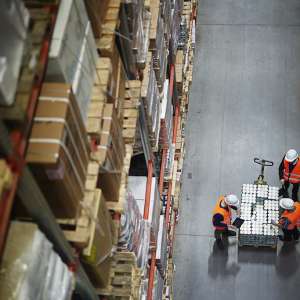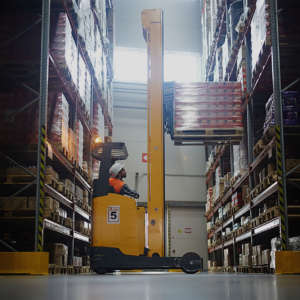In a world where speed and convenience are everything, the logistics industry is constantly innovating and finding ways to get people what they want, as quickly, safely, and efficiently as possible. Whether you’re trying to save on space, time, or money, cross-docking is one technique that can help your business keep more of all three.
In this article, we’ll explore a bit more about what cross-docking is, how it differs from transloading, its importance in eCommerce, and additional benefits any business can enjoy when they use it.
What is Cross-Docking?
Did you know that you can build a logistics process without needing a warehouse at all, third-party or otherwise? Cross-docking is exactly that. It’s the process of receiving goods and shipping them out without prolonged storage in a warehouse. As you can imagine, this requires impeccable timing, synchronizing inbound and outbound shipments so that logistics teams can move goods quickly. Since inbound goods are loaded onto outbound vehicles right away, you can minimize storage costs while speeding up delivery times.
Cross-Docking vs. Transloading
While this may sound similar to transloading, cross-docking and transloading are not the same. At its most basic definition, cross-docking is simply moving goods between inbound and outbound vehicles with little to no warehouse storage time in between. Transloading, on the other hand, is the process of transferring goods from one mode of transportation to another (for instance, from a ship to a truck, or from a train to a plane).
Though both cross-docking and transloading are cost-saving measures, they do so in different ways. The value of cross-docking comes from the money saved on associated storage costs and the speed of successful deliveries. Transloading, however, saves money through the most efficient use of transportation modes. For example, it might be cheaper to ship a single load of grain via train than in multiple trucks or, in the case of international shipping, a shipment might require overseas shipping and, once it reaches a dockyard, is then loaded onto trucks for the rest of the way.
How Cross-Docking is Important to eCommerce
Though any business that requires shipping can benefit from cross-docking, it’s especially useful for eCommerce businesses. Whether or not those businesses have their own logistics resources or require the help of third-party (3PL) partners, cross-docking plays a significant role in eCommerce for a few reasons.
In addition to speeding up delivery and reducing storage costs, these add up to a more streamlined approach to inventory management. Since products are not held for long periods, the quick turnaround can reduce problems such as over- and understocking, making any warehouse space you do have much more efficient.
Cross-docking also naturally decreases handling costs since the goods in this process are handled much less than in traditional logistics processes. In turn, since cross-docked merchandise is handled less, the costs associated with labor and potential damage are also minimized.
In that same vein, cross-docking increases product availability, allowing your fulfillment teams to get hot-selling items out faster, safer, and in a much more cost-effective manner.
It’s important to note, however, that cross-docking relies on precise coordination and logistics management. Most of this process relies on a just-in-time model with accurate forecasting and scheduling; one delayed truck can cause a domino effect of logistical chaos. For this reason, cross-docking is a tactic that’s better suited for larger eCommerce businesses with more resources, infrastructure, and flexibility in case of unexpected delays or glitches in shipping communication.
Additional Benefits of Cross-Docking
In addition to the slew of benefits cross-docking offers, there are other positive factors businesses can enjoy. Moreover, these same benefits can be leveraged for further growth when used with front-facing activities such as sales and marketing.
Reduced Carbon Footprint
Because efficiency is the byword of sustainability, cross-docking can help reduce your company’s carbon footprint and costs related to inefficient logistics practices. This happens in two main ways:
- Reducing the amount of time trucks are on the road, in turn, lowering fuel consumption and emissions.
- Reducing the amount of warehouse space needed, lowering utility bills and the physical footprint your business needs to operate.
If sustainability is a main part of your company’s values and marketing strategy, cross-docking is another process you can use to demonstrate your commitment to these values.
Increased Shipping Volume
Because cross-docking also improves shipping speed, the faster you can move your goods, the more customers you can effectively serve. For instance, instead of a week’s turnaround, moving products in as little as four days means you can potentially ship twice as much in roughly the same time period. Moreover, since cross-docking doesn’t utilize much warehouse space if any, your storage costs remain the same.
Better Customer Satisfaction
With the precise communication necessary to keep cross-docking working as it should, this same technology used by your logistics team can also send useful information to your customers, eagerly waiting for their packages to arrive at their front door. With greater transparency, faster delivery times, and a lower risk of damage due to handling, your customers are more likely to be happier, spreading the word about your business and rewarding you with increased sales.
Explore Cross-Docking Strategies with UCanTrade
While there are plenty of benefits to cross-docking, it requires a lot of planning, precision, and a commitment to maintaining the system once it’s built. Since the success of this process relies on just-in-time deliveries, cross-docking can quickly become overwhelming if not handled properly.
However, you shouldn’t let that discourage you. If you’re interested in determining if cross-docking is right for your business, reach out to us today to learn more about how the experts at UCanTrade can help.



